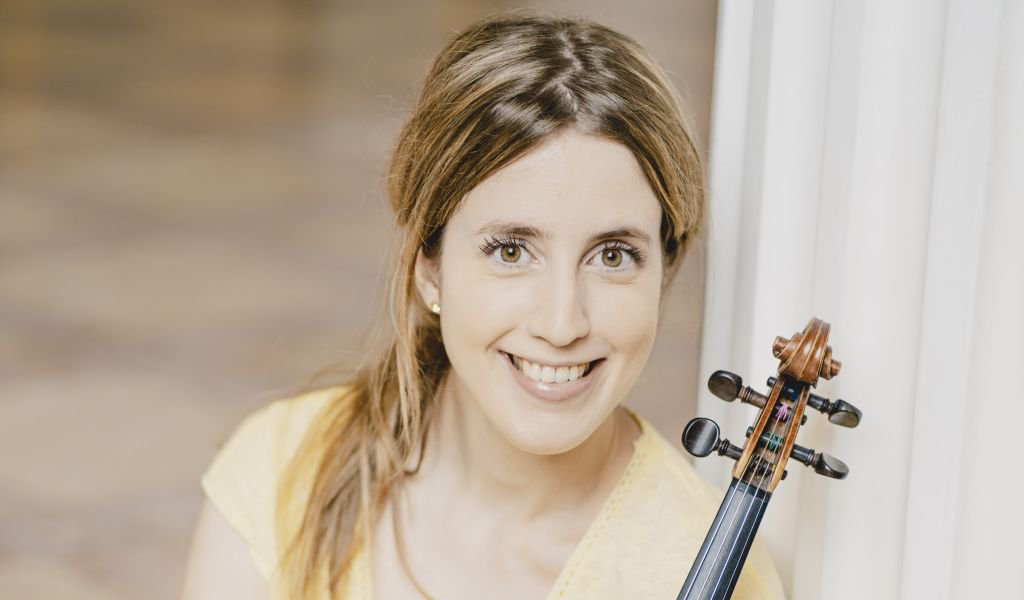
Program
Featuring
Other information
Season tickets
- SOLTI A
- SOLTI B
The event is about 2.5 hours long.
About the event
Vilde Frang is a name all music fans know. Fortunately, the sensitive Norwegian violin virtuoso is an increasingly frequent visitor to Budapest and contributor to the BFO’s concerts, providing audiences with an unforgettable experience each time. This time, she will perform Stravinsky’s violin concerto, which has a special place in the history of violin compositions. As the composer was not particularly familiar with the instrument, he could disregard standard practices and managed to create something completely new. Just like the violin concerto, Enescu’s two Romanian rhapsodies were composed in the city of art, Paris. The concert is opened by the more well-known of the two, the dance-like Rhapsody No. 1 redolent of barns, and concluded by Prokofiev’s often misinterpreted Symphony No. 5, which for all the composer’s claims has nothing to do with war.
Like Liszt and Dvořák before him, George Enescu set out to explore his country’s folk music. Though later he referred to them as his “youthful sins,” the Romanian Rhapsodies written at age 19 continue to be his best-known compositions. They are characterized by an air of spontaneity, an exotic soundscape, vivid rhythms, and elements of lăutărească music. Rhapsody No. 1 begins by quoting a folk song, with the rest of the instruments gradually joining in. Enescu picked up the Romani style mostly from his first violin instructor, Lae Chioru.
Though the finale of the Violin Concerto was described by Robert Craft as “one of the most exciting endings ever written by Stravinsky,” the composer was by no means certain that his piece would be a success. Due to his lack of familiarity with the instrument, he only took the commission at Paul Hindemith’s intervention and promise that the recipient of the piece, violinist Samuel Dushkin would be available for consultation throughout the process of composition. Each movement starts with the same chord, first sketched by Stravinsky on a napkin. Once Dushkin found the chord easy to play, Stravinsky proceeded to write the entire piece. According to Bachtrack Vilde Frang “nailed this chord with laser-like accuracy.” With the titles of the movements referencing genres of the Baroque (Toccata, Aria I, Aria II, Capriccio) Stravinsky is paying tribute to Bach. Though consistently objecting to any comparison to other composers, he, like many, considered the Baroque master to be a role model.
With the end of World War II drawing near, the USSR’s leaders were convinced of their victory, and expected artists to share their optimism. Though claiming in an official statement that his Symphony No. 5 was intended as “a hymn to (Man’s) mighty powers,” Prokofiev made use of musical allusions that suggest otherwise. The scherzo following the moderately paced opening movement features motifs from his Cinderella, while the slow movement quotes the nostalgic style of his Romeo and Juliet. The piece concludes with an iconic finale.
Did you know? Enescu’s Romanian Rhapsody was first performed in Bucharest on February 23, 1903 (conductor: Eduard Wachmann), the premiere of Stravinsky’s violin concerto was in Berlin on October 23, 1931 (soloist: Samuel Dushkin, conductor: the composer), Prokofiev’s symphony debuted in Moscow on January 13, 1945 (conducted by the composer); the Festival Orchestra last played Stravinsky’s composition in Budapest on October 15, 1994 (soloist: Elizabeth Balmas, conductor: Marek Janowski), Prokofiev’s piece in New York on February 18 2016 (conductor: Iván Fischer), and will be performing Enescu’s rhapsody now for the first time.
Contemporary events on October 10, 1903, the first Elisabeth Bridge was opened in Budapest; it was exploded later, in 1945 / French composer Maurice Ravel completed his String Quartet in F major in April 1903 / Russian painter Wassily Kandinsky painted The Blue Rider in 1903 / in 1931, Pope Pius XI issued his encyclical beginning with “Quadragesimo anno” / Belgian painter René Magritte painted The Voice of Space in 1931 / Russian writer Andrei Platonov completed his novel entitled The Foundation Pit in 1931 (although it was published only in 1969 in West Germany) / on May 8, 1945, Germany unconditionally capitulated and then World War II ended with the Japanese surrender on September 2 / the String Quartet No. 2 of English composer Benjamin Britten premiered in London on November 21, 1945 / The Open Society and Its Enemies by Karl Popper, an English-Jewish philosopher of Austrian origin, first appeared in 1945
